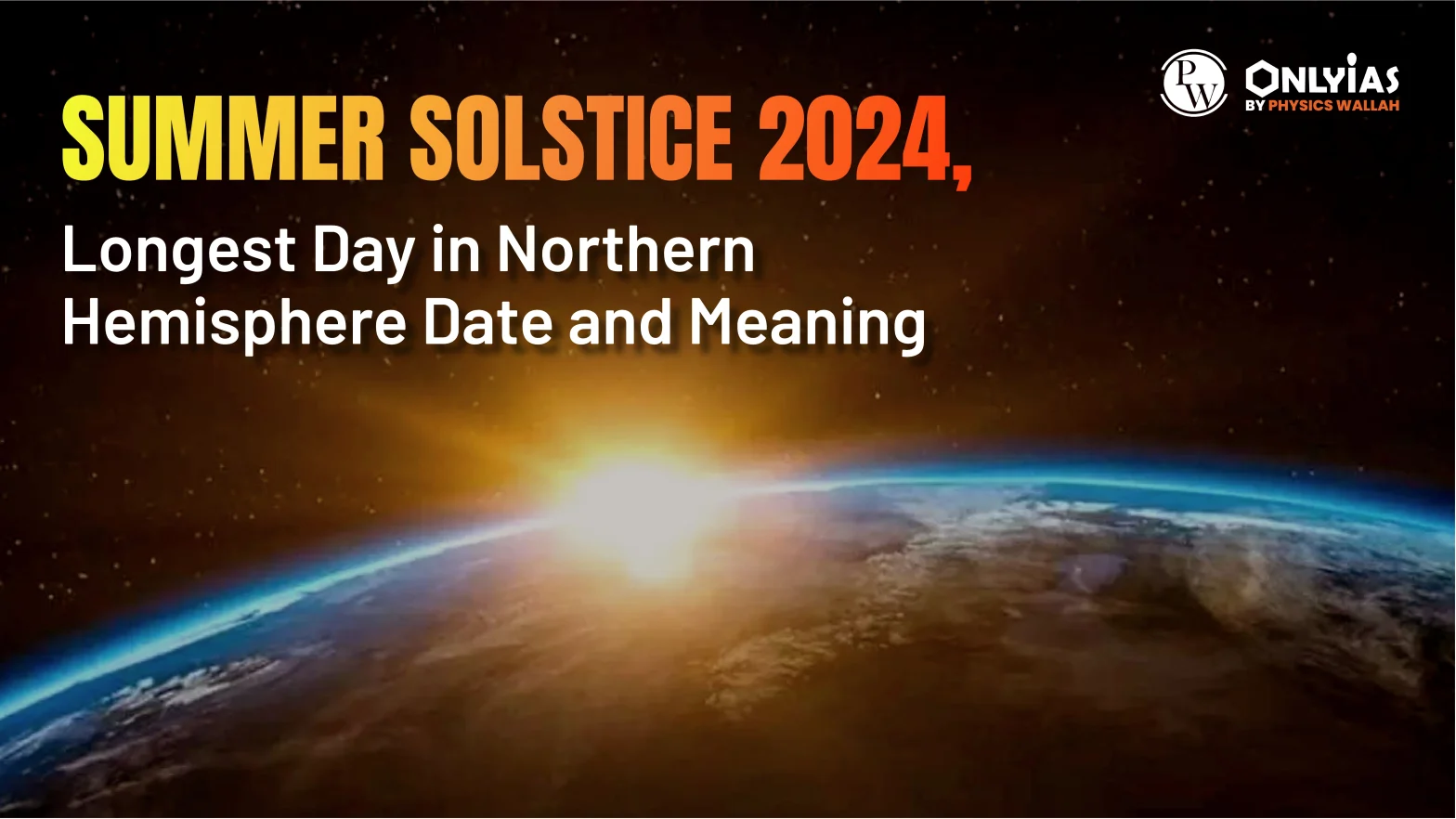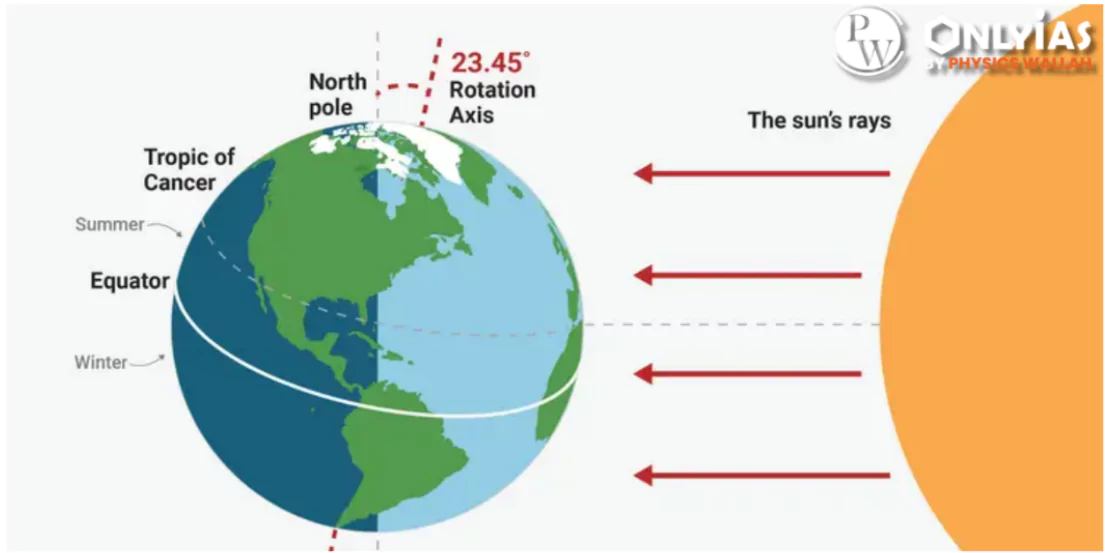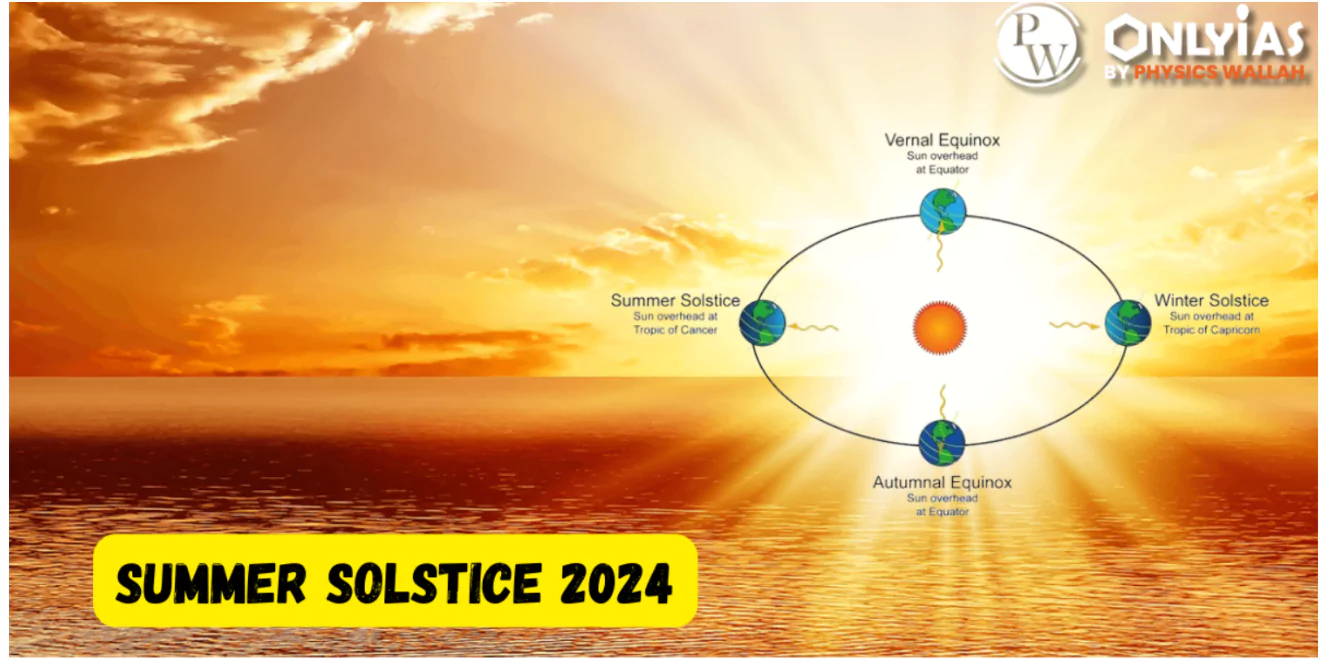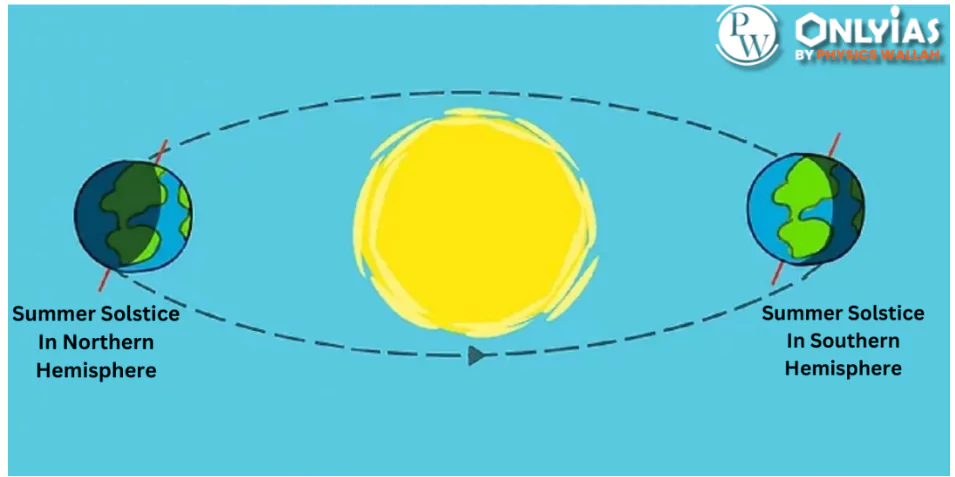Summer Solstice 2024 is the longest day of the year 2024. In the Northern Hemisphere, this is the June solstice (20 or 21 June) and in the Southern Hemisphere, this is the December solstice (21 or 22 of December). In India, the Summer Solstice 2024 will happen on June 21 at 8:09 PM IST.

Summer Solstice 2024 is marked the longest day of the year 2024. The Summer Solstice 2024 is an astronomical event that marks the longest day and the shortest night of the year. This Solstice occurs when one of Earth’s poles has its maximum tilt toward the Sun.
The Summer Solstice usually occurs around June 20th or 21st in the Northern Hemisphere and around December 21st or 22nd in the Southern Hemisphere. During the Summer Solstice, the Sun reaches its highest position in the sky at noon. This in turn results in the longest period of daylight.
Let us have a look at the Summer Solstice 2024 in the Northern Hemisphere. Summer Solstice in the Northern and Southern Hemisphere, along with the difference between Summer Solstice and Winter Solstice are also given here.

Today, India is observing the Summer Solstice 2024, which occurred around 2:00 AM IST. As per UTC, the Summer Solstice 2024 occurred on Thursday, 20th June 2024, around 20:50 UTC. This Summer Solstice marks the longest day of the year in the Northern Hemisphere, signaling the start of the summer season.
| Did You Know?
International Yoga Day is celebrated on 21st June every year because it marks the summer solstice, the longest day of the year in the Northern Hemisphere. The International Yoga Day 2024 is on 21st June 2024 and this year’s theme is “Yoga for Women Empowerment.” |
|---|
June Solstice 2024 occurs on 21st June 2024. This event marks the moment when the Earth’s North Pole is tilted closest to the Sun, resulting in the longest day and shortest night of the year in the Northern Hemisphere, and the shortest day and longest night in the Southern Hemisphere.

Summer Solstice in the Northern Hemisphere marks the longest day of the year, occurring around 20th or 21st June. This event happens when the Earth’s axial tilt is most inclined towards the sun, positioning the sun at its highest point in the sky at noon. This could be understood by the Motions of Earth.
The day of the Summer Solstice has the most extended period of daylight and the shortest night. In places within the Arctic Circle, the sun may not set at all, resulting in the phenomenon known as the Midnight Sun.
The Summer solstice occurs when the sun is directly overhead at the Tropic of Cancer (23.5°N latitude). This is due to the tilt of the Earth’s axis, which is approximately 23.5 degrees relative to its orbit around the sun.
Summer Solstice in the Southern Hemisphere typically occurs around December 21st or 22nd each year. This event marks the longest day of the year, with the most daylight hours and the shortest night.
The Summer solstice happens because the Earth’s axis is tilted about 23.5 degrees relative to its orbital plane around the sun. During the Summer Solstice in the Southern Hemisphere, the South Pole is tilted closest to the sun.
On this day, the sun reaches its highest point in the sky at noon, appearing directly overhead at the Tropic of Capricorn (latitude 23.5° South).

The summer solstice in the Northern Hemisphere, occurring around 21st June, features the longest day and shortest night, marking the start of summer. The winter solstice, around December 21, has the shortest day and longest night, signaling the beginning of winter. These events are due to Earth’s axial tilt.
The table below contains the list of differences between Summer and Winter Solstice in the Northern Hemisphere:
| Difference Between Summer and Winter Solstice | ||
| Aspect | Summer Solstice | Winter Solstice |
| Date | Around 21st June (Northern Hemisphere) | Around 21st December (Northern Hemisphere) |
| Earth’s Tilt | North Pole tilted closest to the Sun | North Pole tilted furthest from the Sun |
| Day Length | Longest day of the year | Shortest day of the year |
| Night Length | Shortest night of the year | Longest night of the year |
| Sun’s Position | Highest point in the sky at noon | Lowest point in the sky at noon |
| Northern Hemisphere Weather | Summer in Northern Hemisphere | Winter in Northern Hemisphere |
| Southern Hemisphere Weather | Winter in Southern Hemisphere | Summer in Southern Hemisphere |
| Sun’s Path | Longest arc across the sky | Shortest arc across the sky |
Summer Solstice 2024 in India will be on 21st June 2024 around 2:00 AM IST. Summer Solstice 2024 will be the longest day of the year 2024 in the Northern Hemisphere. Celebrated with various cultural festivities, it signifies the peak of summer, abundant daylight, and the sun reaching its highest point in the sky.
| Related Articles | |
| Revolution Of Earth | Winter Solstice |
| Motions Of The Earth | Latitudes, Longitudes And Heat Zones |
| Indian Weather Seasons | Geography Notes |
The summer solstice, occurring around 21st June 21 in the Northern Hemisphere, is the year's longest day, marking when the sun reaches its highest point in the sky.
The summer solstice marks the longest day and shortest night of the year in the Northern Hemisphere, when the sun reaches its highest point in the sky.
The Summer Solstice occurs because Earth's axial tilt leans the Northern Hemisphere closest to the Sun, resulting in the longest day of the year. This happens annually around June 21st when the Sun reaches its highest point in the sky.
In 2024, the longest daylight day occurs on June 21st, the summer solstice in the Northern Hemisphere, with the maximum duration of sunlight due to the Earth's axial tilt.
During the summer solstice, the Earth's axial tilt is most inclined towards the Sun, resulting in the longest day of the year in the Northern Hemisphere and the shortest in the Southern Hemisphere.
A solstice occurs when the Sun reaches its highest or lowest point in the sky, marking the longest or shortest day of the year. An equinox occurs when day and night are nearly equal in length.

<div class="new-fform">
</div>